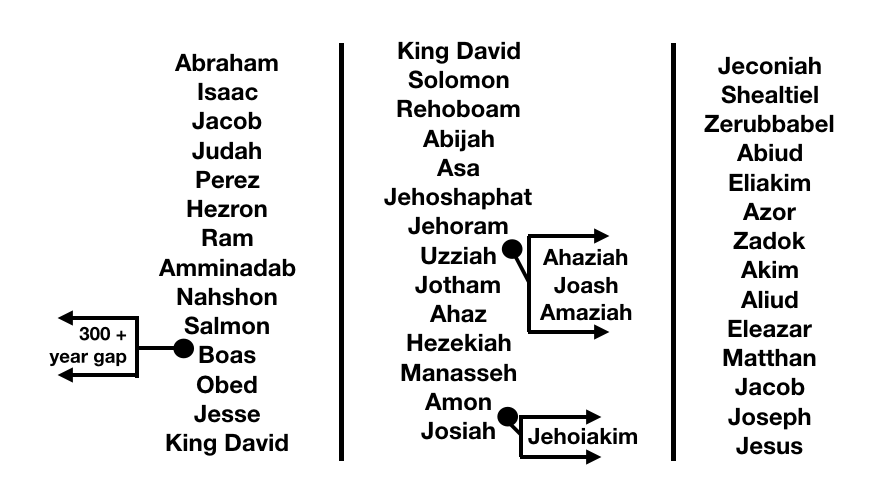Did Jesus speak Greek?
/Have you ever wondered what language Jesus spoke? Today many of us read the Bible in a modern translation and assume that Jesus was probably speaking Hebrew or maybe Aramaic. However, the New Testament books were originally written in Greek, so how does that fit in?
Here’s what we do know, the first-century Roman province of Judea has evidence of three languages present during Jesus’ day: Aramaic, Hebrew, and Greek.
Aramaic had become the day-to-day tongue of the Jewish people since their return to Israel after the Babylonian exile. Throughout the Ancient Near East Aramaic was the lingua franca (the language that was adopted as a common tongue between speakers whose native languages were different). It functioned as the language of diplomacy, the markets, and the home for many ancient civilizations. After the destruction of Jerusalem by the Babylonians in the sixth century BC, Darius I of Persia made a declaration that Aramaic would be the official language
In the fourth century BC Alexander the Great invaded the known world, and Greek from that point onward become the language of the ancient world. After Alexander’s death in June of 323 BC, the Hellenistic (that is to say, culturally Greek) Empire extended from India to Egypt. Within twenty years of his passing the empire was divided into three major sections, of which the land of Israel was very much a part of this world. Along with a good deal of cultural influences that came with Hellenism throughout the decades was also the linguistic elements.
The Greek saturated province of Judea
There is no doubt that the four gospel biographies of Jesus’ life, Matthew, Mark, Luke, and John, tell a very Jewish story. This is not only confirmed by the content of the gospels themselves but also by the archaeology of the geographical area - first century Israel was thoroughly Jewish. This is particularly true of what we see of Jesus’ neck of the woods, Lower Galilee. We have archaeological remains of synagogues in areas like Gapernaum, Gamla, and Magdala. Jewish purity wash basins are commonly found among the remains of settlements and areas of worship throughout the region. Even something as concrete as the absence of pig bones in garbage dumps suggests that the local population avoided pork in obedience with Jewish dietary customs, a sure signifier of Jewish presence as everyone else in the ancient world ate pigs. These realities and many more show that Jesus’ context and public ministry was indeed very Jewish, just as the subject matter of the gospels says.
All of this begs the question then: why was this story written in Greek? Why not Hebrew or Aramaic, the languages of Judaism at that time, why were all 27 books of what we now call the New Testament compiled and penned in a pagan language?
Israel had been part of the Hellenistic world ever since the fourth century BC Asian conquest of Alexander the Great, and the influence of Greek culture in it was thorough and swift. A simple flip through the names of the Hosmonean rulers of the region in the wake of the Maccabean revolt of 167-160 BC gives us a clear picture of this. Although the local revolution by the Maccabees was done to illustrate a distaste for the mix of Jewish and Greek culture, the dynasty that emerged from it was thoroughly Hellenized.
The five brothers who successfully led the Maccabean uprising and ruled in its aftermath, Yehuda (Judah), Yonatan (Joathan), Yohanan (John), Shim’on (Simon), and Elazar, all had strictly Jewish names. However, after Shim’on’s death in 134 BC, the last of the brothers to rule Israel, the only successor was his son Yohanan Hykanus (134-104 BC), who’s name was a Hebrew-Greek mix. This was true for his following sons, Aristobulus Yehudah, who ruled for one year, and Alexander Jannaeu, who controlled Judea until his death in 76 BC. Alexander Jannaeus’ sons were simply known as Hyrkanus II and Aristobulus II, both thoroughly Greek names with no Jewish additives.
By the time we get to the first century AD, Greek names were just as popular. Of Jesus’ twelve disciples two had Greek names: Andrew and Philip. Andrew’s parents called their oldest son Simon, which works equally well in Hebrew or Greek, but when they had another son they gave him a rather rare name which works exclusively in Greek. This suggests that they either spoke Greek or aspired to speak Greek.
Although it is often claimed that the other ten disciples held Hebrew / Aramaic names, this is not entirely true. Hebrew names can end in any letter but Greek words and names only end with a vowel or the sound “n,” “s,” or “r.” If we look at the list given in Matthew 10:2-4, apart from the two Simons, all the rest end with a Greek “s.” This does not necessarily mean that the names Thomas, Bartholomaios, or Iakabos (James) are Greek, but it does mean they are presented as “nativised” with Greek terminations. It was not uncommon to adopt Hebrew Old Testament names like Iacob (Hebrew) vs. Iakobos (Greek) (cf. Matthew 1:2, 10:2) or Mariam (Hebrew) and Maria (Greek), all of which have convenient Greek equivalents.
In Jesus’ immediate family we have Greek-adapted endings to Old Testament names in Iakobs and Ioudas, or a Greek and Hebrew name in Simon. The only purely Hebrew name for a sibling was Joseph (Matt. 13:55), named after his father but adapted to Greek morphology in the form of Joses in Mark 6:3. In fact, all of Jesus’ disciples and siblings have evidence of adaptation to Greek endings. Even the name Jesus ends with “s” because of its accessibility in the Greek language.
We even start to see Hebrew / Greek synchronization with some names in the gospelsr like bar-Tamaois (a Hebrew beginning and Greek ending. Mark 10:46 mentions a beggar named bar-Timaios. “Bar” is Aramaic for “son of,” but Timaios is the name of Plato’s character Timaeus of Locri, the namesake of Plato’s famous monologue. Whether there was an understanding of the origin of this important name or not, it is nonetheless evidence of thorough Greek adoption within the culture.
Greek culture had so saturated in Jewish society in Jesus’ day that the religious ruling council was known as the “Sanhedrin,” which is Greek not Hebrew or Aramaic. Greek was on the coins of this time period, and Greek is the main transcriptional language we find in artifacts of Jesus’ day. You would be hard pressed to find even Aramaic writing that didn’t include at least some semblance of fusion with Greek words and phrases.
None of this is evidence Jesus could speak Greek, but it is interesting to see the Hellenization that took place in a nearly exclusively Jewish Roman province.
So, did Jesus speak Greek?
Throughout Jesus’ ministry we see some very interesting examples of interactions that seem to make far more sense if they happened in Greek. For example, Jesus’ conversation with Pilate at his interrogation (Mark 15:2-3, Matthew 27:11-14, Luke 23:2-4, John 18:29-38), his conversation with the Roman centurion (Matthew 8:5-13, John 4:46-54), or his interaction with the Syrophoenician (or Canaanite gentile) woman (Mark7:25-30, Matthew 15:21-28). These examples make the most sense if, taking into considering both the flow of the conversation (as it’s recorded in the Greek gospels) as well as who these individuals Jesus is speaking to are, speaking Greek specifically and not Aramaic or Hebrew.
Either way, the language spoken at that time was a bit of a mix. For example, in Matthew 5:22 it is recorded that Jesus says “But whoever says to his brother' ‘Raca’ will be liable to the Sanhedrin.” If Jesus spoke these words in Aramaic, he used the Greek-origin word “Sanhedrin” in the sentence. If he spoke that sentence in Greek, he still used the Aramaic word “raca.” This is just one example of many that we can see being a mix of cultures and languages. First century Aramaic would have been interspersed with all sorts of Greek phrases and terms.
Although not specifically the first century, we do know that Greek ended up becoming seamless with a lot of the regional dialects like Coptic and Syriac between the second and fourth centuries. One only has to look through lexicons of these two languages to see that Coptic, as it was read in the fourth century, had developed into just over 15% Greek in its vocabulary.
Another fascinating example pointing to a high probability of Jesus speaking Greek is that within the Gospel of Matthew Jesus starts his opening speech with alliteration of Greek words. The first four beatitudes in Matthew 5:3-6 all begin with pi (π):
”Blessed are the poor (πτωχοὶ - ‘ptochoi’)…”
”…those who mourn (πενθοῦντες - ‘penthountes’)…”
”…the meek (πραεῖς - ‘praeis’)…”
”…those who hunger (πεινῶντες - ‘peinontes’)…”
In fact, Greek alliteration is all over the place in this sermon. Matthew 5:6 states, “Blessed are those who hunger and thirst for righteousness.” Thirst is the word “διψῶντες” (dipsontes) and righteousness is “δικαιοσύνην” (dikaiosynen).
Matthew 5:8 goes on to say “Blessed are the pure in heart.” “Pure” is the word “καθαροὶ,” (katharoi) “heart” is the word “καρδίᾳ” (kardia). They are kappa alpha (κα) repeats.
The beatitudes have eight initial terms, of which the third declension plurals are all grouped in beatitudes two to five. Beatitudes two and four to seven end with the rhyming sound “ontai,” which ends a verb. The final position of these verbs is not compulsory and so therefore, seems to be organized that way on purpose. In addition, the initial phrase “poor in spirit” has two consonant clusters beginning with pi (π).
Matthew 4:25 states that “Large crowds from Galilee, the Decapolis, Jerusalem, Judea and the region across the Jordan followed him.” Broad Galilean Aramaic would not have helped the folks form the notoriously Greek Decapolis. It is far more likely that those from “Jerusalem, Judea…. and the region across the Jordan” would have spoken Greek as opposed to those from the Decapolis speaking Aramaic / Hebrew.
There has even been recent archaeological discoveries that echo the prevalence of Greek religious teaching in Jesus’ day. There is firm verification of a Greek-speaking synagogue adjacent to the temple in Jerusalem. A large Greek inscription of ten lines was discovered within the last decade, found in a cistern just south of the Temple Mount. A section of it reads:
Theodotos son of Vettenos, priest and synagogue leader, son of a synagogue leader, grandson of a synagogue leader, built the synagogue for the reading of the Law and teaching of the commandments, and the guest-house and other rooms and water installation for the lodging of those who are in need.
This shows that Greek speaking adherers of Judaism were common enough within Jerusalem itself that there were religious institutions catering to those who preferred the Greek language specifically.
A Comment about “Hebrew Matthew”
It has been pointed out that there are a number of Early Church Fathers, specifically Papias of Hierapolis, who say that Matthew “collected the sayings [of Jesus] in the Hebrew dialect, and each interpreted them as well as he could” (Eccl. Hist. 3.24.6). These types of quotes have launched the “Hebrew-source hypothesis” for the origin of Matthew’s gospel. This theory raises the supposition that what we know of the Gospel of Matthew was originally written in Hebrew and then later translated into Greek. I personally think there are a number of problems with this theory which I won’t necessarily go into here, however, when we look at things like the alliteration in Matthew’s Sermon on the Mount (one among many examples), it seems clear that not only was this message given in Greek, but that Matthew wrote it down in Greek as well.
Conclusion
When taken as a whole, the evidence for Jesus speaking at least some Greek seems pretty strong. Although Aramaic was most probably the day-to-day language in Jesus’ day and region, and Hebrew was the liturgical and religious language of the period, I do not think it is much of a stretch to also include Greek on that list. Jesus’ Hellenistic context would have been well suited for it, the synchronicity of the language was clearly there, and if nothing else as a tradesman or “carpenter” (a “τέκτων” as mentioned in Mark 6;3 and Matthew 13:55), Jesus would most likely have done business with Greek speaking individuals. Although that last point may be speculation, such a background in the trades could have made him well suited for the conversations we see taking place with Pilate at his interrogation (Mark 15:2-3, Matthew 27:11-14, Luke 23:2-4, John 18:29-38), the Roman centurion (Matthew 8:5-13, John 4:46-54), and the Syrophoenician woman (Mark7:25-30, Matthew 15:21-28). Given this fact, I think it makes perfect sense to say Jesus spoke Greek, and that not all, but many of Jesus’ words that we have recorded for us in the gospels are transcriptions not necessarily translations of his own words.





































